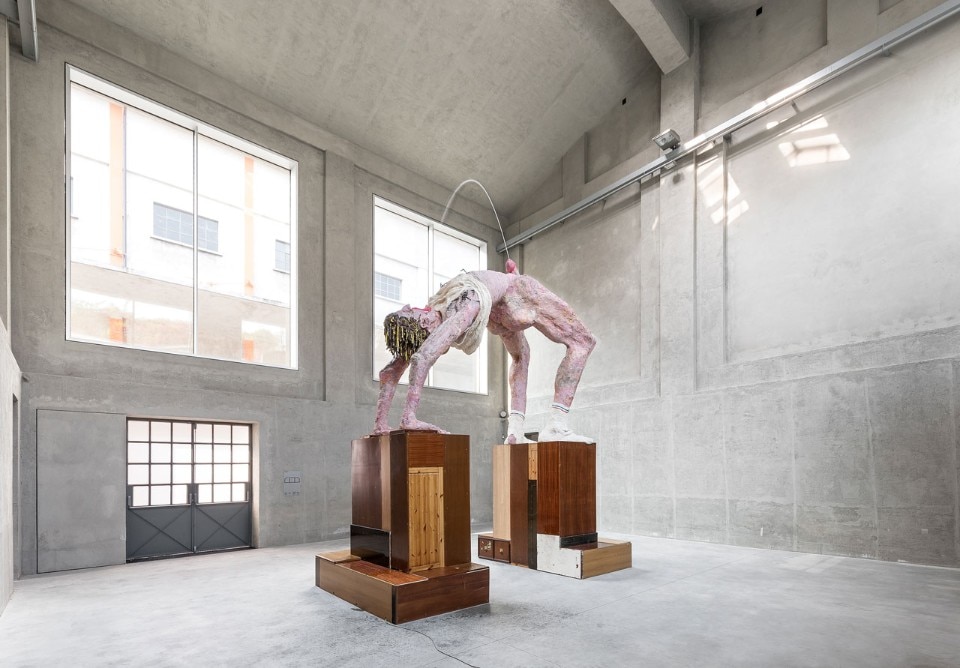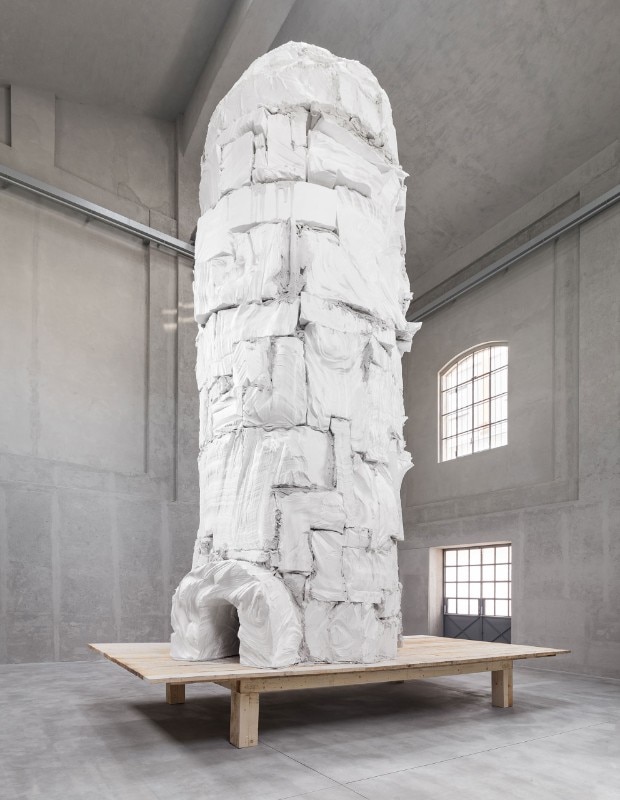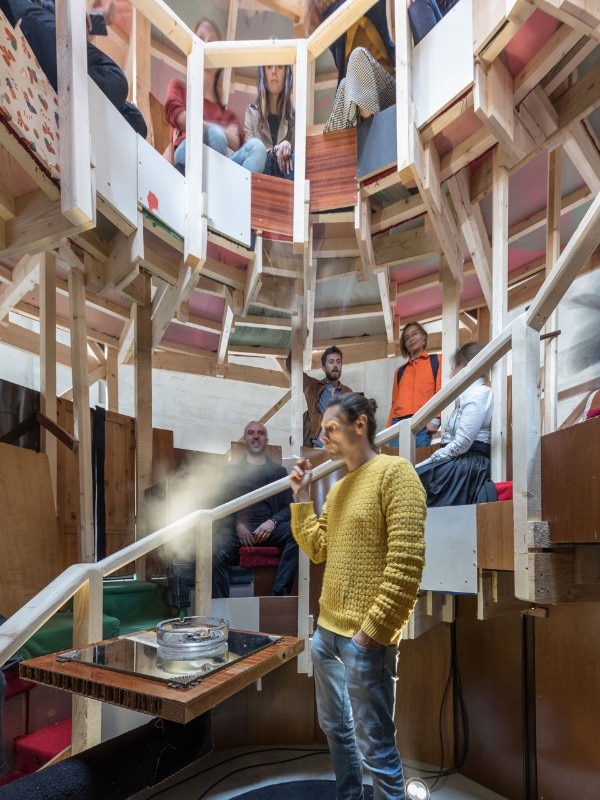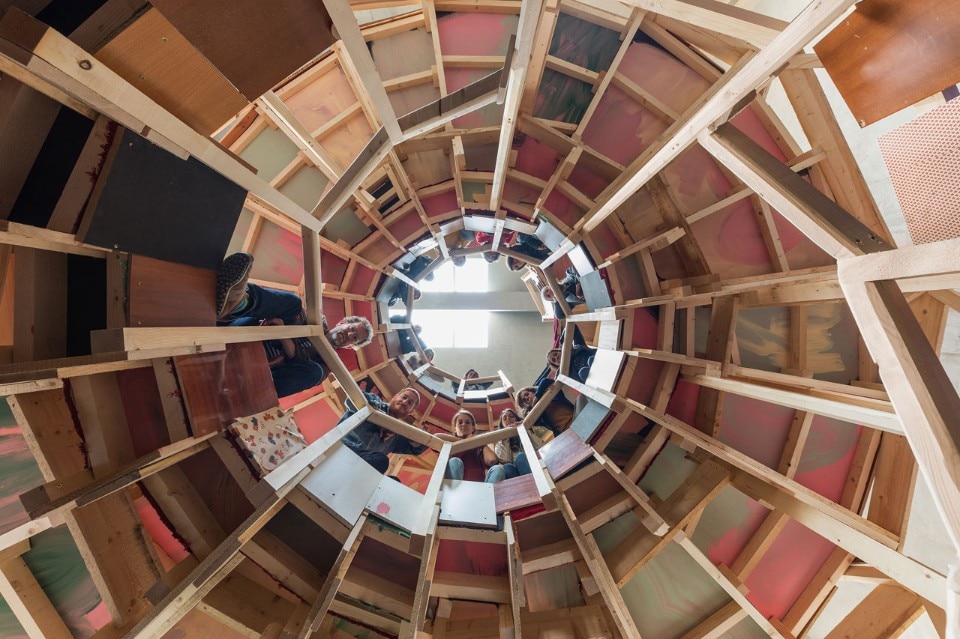If you have been following them for the last twenty years, the name of the Viennese art-band Gelitin conjures up a series of images: funny, eccentric, sometimes scandalous and always unmistakable situations in the unceasing stream of art world. For all who come new to them, the Austrian collective Gelitin is a group of four artists in their forties who are famous for their participatory works and events. Ever since 1993 (the year the group was formed) they have developed their own distinctive approach and identity in that artistic tradition typical of the nineties that the critic Nicolas Bourriaud defined as Relational Aesthetics, rapidly winning over critics and the public at the most important institutions and contemporary art biennials.
As the third out of four chapters of the exhibition project conceived by the Thought Council at the Prada Foundation (curators Shumon Basar, Cédric Libert, Elvira Dyangani Or and Dieter Roelstraete), Slight Agitation presents a new site-specific concept designed for the large spaces of the Cisterna of the Milan art district. After works by Tobias Putrih and Pamela Rosenkranz here is the project developed by Gelitin and entitled Pokalypsea-Apokalypse-Okalypseap. It consists of three huge sculptures set in the Cisterna’s three rooms.
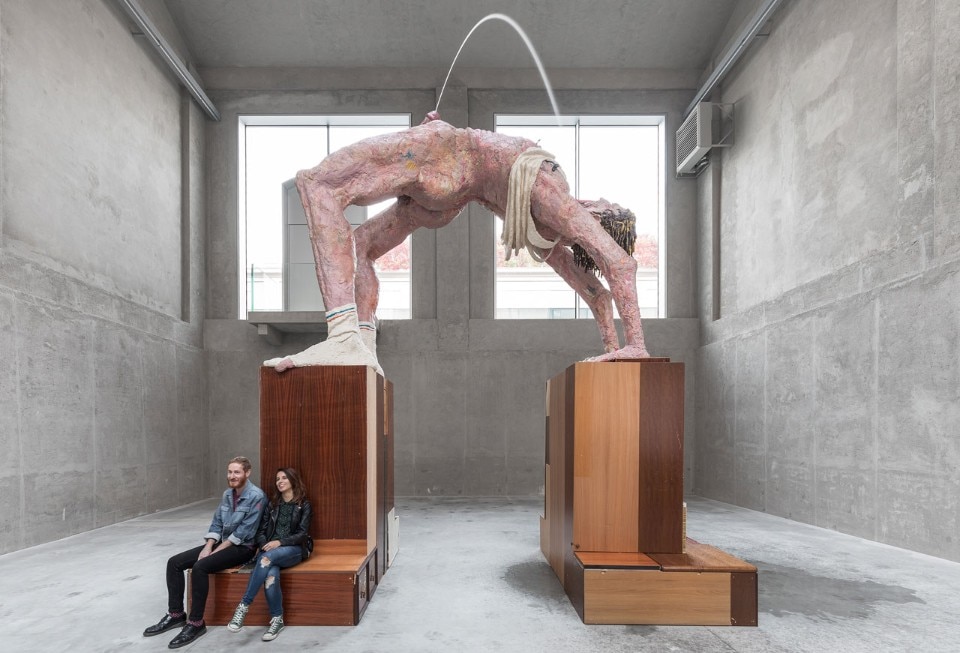
The title, itself evocative, suggests the identity and density of the project. Jointed, deconstructed and recombined out of elements that range from a wealth of scavenged objects to erect the three sculpture-installations, like old wardrobe doors, bedside tables and other furniture, they suggest domestic imagery substantially frozen in the 1970s, with the human figure made of polychrome plasticine and polystyrene blocks set side by side to form an eccentric igloo-obelisk.
An obelisk, then a triumphal arch and finally a kind of tower of Babel-cum-amphitheatre. Gelitin here revisit and deflate the rhetoric of classical public and monumental architectural forms, the expressions of power, conquest and historical memory, by inverting their codes and symbolic overtones. Where the architectural signs accompanying these monuments usually convey a rhetoric of supremacy, centrality and upward thrust, this ill-concealed phallic metaphor of power is sabotaged by Gelitin, who oppose it with their anarchic, open and collective installations shot through with humorous and evanescent signs that always allude to the centrality of the body as the only possible anarchist instrument.
Gelitin’s body is their own, as the principle of their whole poetic. When the group of twenty-year-olds was first formed, their bodies were those of kids at a summer camp. Evasion, complicity, that aesthetic that has almost disappeared of a young European generation that used to travel in caravans or minibuses to reach lakes and mountains, where they set up ephemeral settlements for the duration of a summer and indulged in regressive yet authentic experiences. There, in those improvised theatre communities, the group developed its physicality and gave expression to its most desecrating and irrepressible qualities.
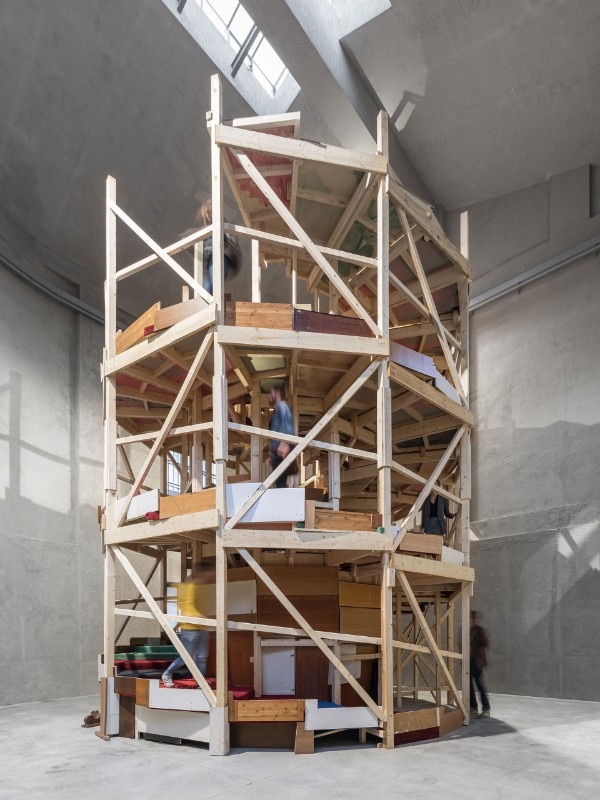
The centrality of the body is here reaffirmed by the position occupied by the Arc de Triomphe (2003-2017) in the central space of the Cisterna. The male figure depicted by Gelitin, “tall as an elephant”, is yet another mocking expression of that symbolic substitution of the summit of all the triumphal arches that dominate the world’s cities. Here it is replaced by a body in tension to create a round-headed arch (hence assuming a limited duration in the time of the action), with an erect penis from which water squirts harmoniously like a fountain, forming a loop and ending up in the figure’s mouth.
An evident semantic game links this anti-monument by the Austrian quartet with episodes in art history such as Bruce Nauman's Self-Portrait as a Fountain (1966) and Duchamp's Fountain (1917). In both cases a static and monumental element, typical of street furniture, is replaced by with a body or an object that subtends its physiological functions. Urine and spit thus create a symbolic contrast between public waters and more private and personal fluids.
This is a far from secondary aspect of the various liquids that often appear in Gelitin's creations, as described by curator Dieter Roelstraete in his essay accompanying the exhibition. “Gelitin’s world is pervaded by fluids, and there is still something unexplored and insufficiently theorised in the formal fascination with fluids that distinguishes the art of the group, with liquefaction raised to a sculptural principle and bodily fluids given absolute prominence.” Yet, we should not think of saliva, sperm or urine as superficial and grotesque presences, typical of much sensational art in the nineties. They elicit the body and its functions, presenting similarities with the experience of Atelier Van Lieshout, both creators of devices, utopian and splendidly useless structures.
Designing devices. In this respect, Gelitin have always been prolific and unstoppable creators. Even their vast sculptural production is never defined in completed and finished forms, but objects that allude to functions and actions, just like bodies with their respective lives. And then they also create other devices, such as artist's books or even children's books, extending their performativity outside the places of art. They have devised experiments in land art, like the great pink rabbit created in Piedmont in 2005, or parasitic spaces such as the balcony made of out old furniture set 300 meters high in The B-Thing on the World Trade Center (2000).
Subverting monuments and spaces, overthrowing sense and function, triggers various forms of improvisation, interaction and symbolic experiences in Gelitin’s works. The act of imagining, conceiving or just witnessing this kind of subversion compels our imaginations to test the parameters of daily experience, live collectively and centre our anatomy in its freer, more undisciplined and anarchic impulses.
© all rights reserved
- Exhibition title:
- Slight Agitation 3/4: Gelitin
- Opening dates:
- 20 October 2017 – 26 February 2018
- Venue:
- Fondazione Prada, Cisterna
- Address:
- largo Isarco 2, Milan


